- Home
- H. P. Lovecraft
Shadows of Death Page 3
Shadows of Death Read online
Page 3
There were multiple levels of black vaults below, and never-opened trap-doors, sealed down with metal bands and holding dim suggestions of some special peril.
I seemed to be a prisoner, and horror hung broodingly over everything I saw. I felt that the mocking curvilinear hieroglyphs on the walls would blast my soul with their message were I not guarded by a merciful ignorance.
Still later my dreams included vistas from the great round windows, and from the titanic flat roof, with its curious gardens, wide barren area, and high, scalloped parapet of stone, to which the topmost of the inclined planes led.
There were almost endless leagues of giant buildings, each in its garden, and ranged along paved roads fully two hundred feet wide. They differed greatly in aspect, but few were less than five hundred feet square or a thousand feet high. Many seemed so limitless that they must have had a frontage of several thousand feet, while some shot up to mountainous altitudes in the gray, steamy heavens.
They seemed to be mainly of stone or concrete, and most of them embodied the oddly curvilinear type of masonry noticeable in the building that held me. Roofs were flat and garden-covered, and tended to have scalloped parapets. Sometimes there were terraces and higher levels, and wide, cleared spaces amidst the gardens. The great roads held hints of motion, but in the earlier visions I could not resolve this impression into details.
In certain places I beheld enormous dark cylindrical towers which climbed far above any of the other structures. These appeared to be of a totally unique nature and showed signs of prodigious age and dilapidation. They were built of a bizarre type of square-cut basalt masonry, and tapered slightly toward their rounded tops. Nowhere in any of them could the least traces of windows or other apertures save huge doors be found. I noticed also some lower buildings—all crumbling with the weathering of aeons—which resembled these dark, cylindrical towers in basic architecture. Around all these aberrant piles of square-cut masonry there hovered an inexplicable aura of menace and concentrated fear, like that bred by the sealed trapdoors.
The omnipresent gardens were almost terrifying in their strangeness, with bizarre and unfamiliar forms of vegetation nodding over broad paths lined with curiously carven monoliths. Abnormally vast fernlike growths predominated—some green, and some of a ghastly, fungoid pallor.
Among them rose great spectral things resembling calamites, whose bamboo-like trunks towered to fabulous heights. Then there were tufted forms like fabulous cycades, and grotesque dark-green shrubs and trees of coniferous aspect.
Flowers were small, colorless, and unrecognizable, blooming in geometrical beds and at large among the greenery.
In a few of the terrace and roof-top gardens were larger and more vivid blossoms of almost offensive contours and seeming to suggest artificial breeding. Fungi of inconceivable size, outlines, and colors speckled the scene in patterns bespeaking some unknown but well-established horticultural tradition. In the larger gardens on the ground there seemed to be some attempt to preserve the irregularities of nature, but on the roofs there was more selectiveness, and more evidences of the topiary art.
The skies were almost always moist and cloudy, and sometimes I would seem to witness tremendous rains. Once in a while, though, there would be glimpses of the sun—which looked abnormally large—and of the moon, whose markings held a touch of difference from the normal that I could never quite fathom. When—very rarely—the night sky was clear to any extent, I beheld constellations which were nearly beyond recognition. Known outlines were sometimes approximated, but seldom duplicated; and from the position of the few groups I could recognize, I felt I must be in the earth’s southern hemisphere, near the Tropic of Capricorn.
The far horizon was always steamy and indistinct, but I could see that great jungles of unknown tree ferns, Calamites, Lepidodendro, and Sigillaria lay outside the city, their fantastic frondage waving mockingly in the shifting vapors. Now and then there would be suggestions of motion in the sky, but these my early visions never resolved.
By the autumn of 1914 I began to have infrequent dreams of strange floatings over the city and through the regions around it. I saw interminable roads through forests of fearsome growths with mottled, fluted, and banded trunks, and past other cities as strange as the one which persistently haunted me.
I saw monstrous constructions of black or iridescent stone in glades and clearings where perpetual twilight reigned, and traversed long causeways over swamps so dark that I could tell but little of their moist, towering vegetation.
Once I saw an area of countless miles strewn with age-blasted basaltic ruins whose architecture had been like that of the few windowless, round-topped towers in the haunting city.
And once I saw the sea—a boundless, steamy expanse beyond the colossal stone piers of an enormous town of domes and arches. Great shapeless suggestions of shadow moved over it, and here and there its surface was vexed with anomalous spoutings.
III
As I have said, it was not immediately that these wild visions began to hold their terrifying quality. Certainly, many persons have dreamed intrinsically stranger things—things compounded of unrelated scraps of daily life, pictures, and reading, and arranged in fantastically novel forms by the unchecked caprices of sleep.
For some time I accepted the visions as natural, even though I had never before been an extravagant dreamer. Many of the vague anomalies, I argued, must have come from trivial sources too numerous to track down; while others seemed to reflect a common textbook knowledge of the plants and other conditions of the primitive world of a hundred and fifty million years ago—the world of the Permian or Triassic Age.
In the course of some months, however, the element of terror did figure with accumulating force. This was when the dreams began so unfailingly to have the aspect of memories, and when my mind began to link them with my growing abstract disturbances—the feeling of mnemonic restraint, the curious impressions regarding time, the sense of a loathsome exchange with my secondary personality of 1908–13, and, considerably later, the inexplicable loathing of my own person.
As certain definite details began to enter the dreams, their horror increased a thousandfold—until by October, 1915, I felt I must do something. It was then that I began an intensive study of other cases of amnesia and visions, feeling that I might thereby objectivize my trouble and shake clear of its emotional grip.
However, as before mentioned, the result was at first almost exactly opposite. It disturbed me vastly to find that my dreams had been so closely duplicated; especially since some of the accounts were too early to admit of any geological knowledge—and therefore of any idea of primitive landscapes—on the subjects’ part.
What is more, many of these accounts supplied very horrible details and explanations in connection with the visions of great buildings and jungle gardens—and other things. The actual sights and vague impressions were bad enough, but what was hinted or asserted by some of the other dreamers savored of madness and blasphemy. Worst of all, my own pseudomemory was aroused to wilder dreams and hints of coming revelations. And yet most doctors deemed my course, on the whole, an advisable one.
I studied psychology systematically, and under the prevailing stimulus my son Wingate did the same—his studies leading eventually to his present professorship. In 1917 and 1918 I took special courses at Miskatonic. Meanwhile, my examination of medical, historical, and anthropological records became indefatigable, involving travels to distant libraries, and finally including even a reading of the hideous books of forbidden lore in which my secondary personality had been so disturbingly interested.
Some of the latter were the actual copies I had consulted in my altered state, and I was greatly disturbed by certain marginal notations and ostensible corrections of the hideous text in a script and idiom which somehow seemed oddly unhuman.
These markings were mostly in the respective languages of the various books, all of which the writer seemed to know with equal, though obviously acade
mic, facility. One note appended to von Junzt’s Unaussprechlichen Kulten, however, was alarmingly otherwise. It consisted of certain curvilinear hieroglyphs in the same ink as that of the German corrections, but following no recognized human pattern. And these hieroglyphs were closely and unmistakably akin to the characters constantly met with in my dreams—characters whose meaning I would sometimes momentarily fancy I knew, or was just on the brink of recalling.
To complete my black confusion, many librarians assured me that, in view of previous examinations and records of consultation of the volumes in question, all of these notations must have been made by myself in my secondary state. This despite the fact that I was and still am ignorant of three of the languages involved. Piecing together the scattered records, ancient and modern, anthropological and medical, I found a fairly consistent mixture of myth and hallucination whose scope and wildness left me utterly dazed. Only one thing consoled me: the fact that the myths were of such early existence. What lost knowledge could have brought pictures of the Paleozoic or Mesozoic landscape into these primitive fables, I could not even guess; but the pictures had been there. Thus, a basis existed for the formation of a fixed type of delusion.
Cases of amnesia no doubt created the general myth pattern—but afterward the fanciful accretions of the myths must have reacted on amnesia sufferers and colored their pseudomemories. I myself had read and heard all the early tales during my memory lapse—my quest had amply proved that. Was it not natural, then, for my subsequent dreams and emotional impressions to become colored and molded by what my memory subtly held over from my secondary state?
A few of the myths had significant connections with other cloudy legends of the prehuman world, especially those Hindu tales involving stupefying gulfs of time and forming part of the lore of modern theosophists.
Primal myth and modern delusion joined in their assumption that mankind is only one—perhaps the least—of the highly evolved and dominant races of this planet’s long and largely unknown career. Things of inconceivable shape, they implied, had reared towers to the sky and delved into every secret of nature before the first amphibian forbear of man had crawled out of the hot sea three hundred million years ago.
Some had come down from the stars; a few were as old as the cosmos itself; others had arisen swiftly from terrane germs as far behind the first germs of our life cycle as those germs are behind ourselves. Spans of thousands of millions of years, and linkages of other galaxies and universes, were spoken of. Indeed, there was no such thing as time in its humanly accepted sense.
But most of the tales and impressions concerned a relatively late race, of a queer and intricate shape, resembling no life form known to science, which had lived till only fifty million years before the advent of man. This, they indicated, was the greatest race of all because it alone had conquered the secret of time.
It had learned all things that ever were known or ever would be known on the Earth, through the power of its keener minds to project themselves into the past and future, even through gulfs of millions of years, and study the lore of every age. From the accomplishments of this race arose all legends of prophets, including those in human mythology.
In its vast libraries were volumes of texts and pictures holding the whole of Earth’s annals—histories and descriptions of every species that had ever been or that ever would be, with full records of their arts, their achievements, their languages, and their psychologies.
With this aeon-embracing knowledge, the Great Race chose from every era and life form such thoughts, arts, and processes as might suit its own nature and situation. Knowledge of the past, secured through a kind of mindcasting outside the recognized senses, was harder to glean than knowledge of the future.
In the latter case the course was easier and more material. With suitable mechanical aid a mind would project itself forward in time, feeling its dim, extra-sensory way till it approached the desired period. Then, after preliminary trials, it would seize on the best discoverable representative of the highest of that period’s life forms. It would enter the organism’s brain and set up therein its own vibrations, while the displaced mind would strike back to the period of the displacer, remaining in the latter’s body till a reverse process was set up.
The projected mind, in the body of the organism of the future, would then pose as a member of the race whose outward form it wore, learning as quickly as possible all that could be learned of the chosen age and its massed information and techniques.
Meanwhile the displaced mind, thrown back to the displacer’s age and body, would be carefully guarded. It would be kept from harming the body it occupied, and would be drained of all its knowledge by trained questioners. Often it could be questioned in its own language, when previous quests into the future had brought back records of that language.
If the mind came from a body whose language the Great Race could not physically reproduce, clever machines would be made, on which the alien speech could be played as on a musical instrument.
The Great Race’s members were immense rugose cones ten feet high, and with head and other organs attached to foot-thick distensible limbs spreading from the apexes. They spoke by the clicking or scraping of huge paws or claws attached to the end of two of their four limbs, and walked by the expansion and contraction of a viscous layer attached to their vast, ten-foot bases.
When the captive mind’s amazement and resentment had worn off, and when—assuming that it came from a body vastly different from the Great Race’s—it had lost its horror at its unfamiliar, temporary form, it was permitted to study its new environment and experience a wonder and wisdom approximating that of its displacer.
With suitable precautions, and in exchange for suitable services, it was allowed to rove all over the habitable world in titan airships or on the huge boat-like atomic-engined vehicles which traversed the great roads, and to delve freely into the libraries containing the records of the planet’s past and future.
This reconciled many captive minds to their lot; since none were other than keen, and to such minds the unveiling of hidden mysteries of Earth—closed chapters of inconceivable pasts and dizzying vortices of future time which include the years ahead of their own natural ages—forms always, despite the abysmal horrors often unveiled, the supreme experience of life.
Now and then certain captives were permitted to meet other captive minds seized from the future—to exchange thoughts with consciousnesses living a hundred or a thousand or a million years before or after their own ages. And all were urged to write copiously in their own languages of themselves and their respective periods such documents to be filed in the great central archives.
It may be added that there was one special type of captive whose privileges were far greater than those of the majority. These were the dying permanent exiles, whose bodies in the future had been seized by keen-minded members of the Great Race who, faced with death, sought to escape mental extinction.
Such melancholy exiles were not as common as might be expected, since the longevity of the Great Race lessened its love of life—especially among those superior minds capable of projection. From cases of the permanent projection of elder minds arose many of those lasting changes of personality noticed in later history—including mankind’s.
As for the ordinary cases of exploration—when the displacing mind had learned what it wished in the future, it would build an apparatus like that which had started its flight and reverse the process of projection. Once more it would be in its own body in its own age while the lately captive mind would return to that body of the future to which it properly belonged.
Only when one or the other of the bodies had died during the exchange was this restoration impossible. In such cases, of course, the exploring mind had—like those of the death escapers—to live out an alien-bodied life in the future; or else the captive mind—like the dying permanent exiles—had to end its days in the form and past age of the Great Race.
This fate was le
ss horrible when the captive mind was also of the Great Race—a not infrequent occurrence, since in all its periods that race was intensely concerned with its own future. The number of dying permanent exiles of the Great Race was very slight—largely because of the tremendous penalties attached to displacements of future Great Race minds by the moribund.
Through projection, arrangements were made to inflict these penalties on the offending minds in their new future bodies—and sometimes forced reëxchanges were effected.
Complex cases of the displacement of exploring or already captive minds by minds in various regions of the past had been known and carefully rectified. In every age since the discovery of mind projection, a minute but well-recognized element of the population consisted of Great Race minds from past ages, sojourning for a longer or shorter while.
When a captive mind of alien origin was returned to its own body in the future, it was purged by an intricate mechanical hypnosis of all it had learned in the Great Race’s Age—this because of certain troublesome consequences inherent in the general carrying forward of knowledge in large quantities.
The few existing instances of clear transmission had caused, and would cause at known future times, great disorders. And it was largely in consequence of two cases of the kind—said the old myths—that mankind had learned what it had concerning the Great Race.
Of all things surviving physically and directly from that aeon-distant world, there remained only certain ruins of great stones in far places and under the sea, and parts of the text of the frightful Pnakotic Manuscripts.
Thus the returning mind reached its own age with only the faintest and most fragmentary vision of what it had undergone since its seizure. All memories that could be eradicated were eradicated, so that in most cases only a dream-shadowed blank stretched back to the time of the first exchange. Some minds recalled more than others, and the chance joining of memories had at rare times brought hints of the forbidden past to future ages.

 The Best of H.P. Lovecraft
The Best of H.P. Lovecraft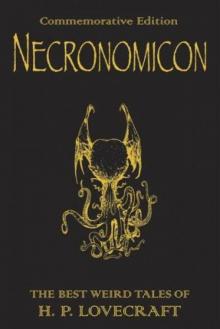 The Definitive H.P. Lovecraft: 67 Tales Of Horror In One Volume
The Definitive H.P. Lovecraft: 67 Tales Of Horror In One Volume The Complete Works of H.P. Lovecraft
The Complete Works of H.P. Lovecraft Other Gods and More Unearthly Tales
Other Gods and More Unearthly Tales Lovecraft's Fiction Volume I, 1905-1925
Lovecraft's Fiction Volume I, 1905-1925 The Shadow Out of Time
The Shadow Out of Time The Shunned House
The Shunned House Lovecraft's Fiction Volume II, 1926-1928
Lovecraft's Fiction Volume II, 1926-1928 The Thing on the Doorstep and Other Weird Stories
The Thing on the Doorstep and Other Weird Stories Dream Cycle of H. P. Lovecraft: Dreams of Terror and Death
Dream Cycle of H. P. Lovecraft: Dreams of Terror and Death Great Tales of Horror
Great Tales of Horror Shadows of Death
Shadows of Death Delphi Complete Works of H. P. Lovecraft (Illustrated)
Delphi Complete Works of H. P. Lovecraft (Illustrated) Waking Up Screaming: Haunting Tales of Terror
Waking Up Screaming: Haunting Tales of Terror H.P. Lovecraft Goes to the Movies
H.P. Lovecraft Goes to the Movies The Road to Madness
The Road to Madness The Complete H.P. Lovecraft Reader (68 Stories)
The Complete H.P. Lovecraft Reader (68 Stories) The Horror in the Museum
The Horror in the Museum Collected Fiction Volume 1 (1905-1925): A Variorum Edition
Collected Fiction Volume 1 (1905-1925): A Variorum Edition Lovecrafts_Fiction, vol.I_1905-1925
Lovecrafts_Fiction, vol.I_1905-1925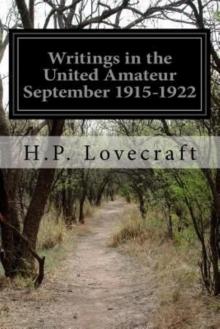 Writings in the United Amateur, 1915-1922
Writings in the United Amateur, 1915-1922 H.P. Lovecraft: The Complete Works
H.P. Lovecraft: The Complete Works Collected Fiction Volume 3 (1931-1936): A Variorum Edition
Collected Fiction Volume 3 (1931-1936): A Variorum Edition H.P. Lovecraft: The Complete Fiction
H.P. Lovecraft: The Complete Fiction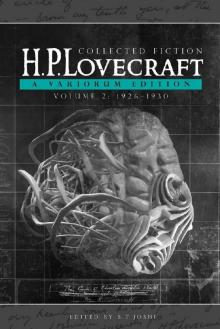 Collected Fiction Volume 2 (1926-1930): A Variorum Edition
Collected Fiction Volume 2 (1926-1930): A Variorum Edition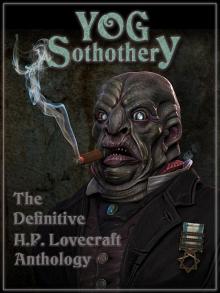 Yog Sothothery - The Definitive H.P. Lovecraft Anthology
Yog Sothothery - The Definitive H.P. Lovecraft Anthology The Complete H.P. Lovecraft Collection (Xist Classics)
The Complete H.P. Lovecraft Collection (Xist Classics)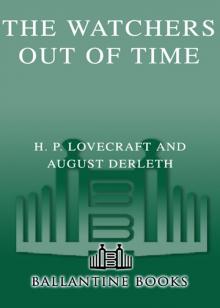 The Watchers Out of Time
The Watchers Out of Time Eldritch Tales
Eldritch Tales The Other Gods And More Unearthly Tales
The Other Gods And More Unearthly Tales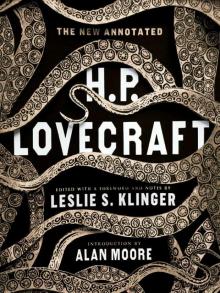 The New Annotated H. P. Lovecraft
The New Annotated H. P. Lovecraft At the mountains of madness
At the mountains of madness Bloodcurdling Tales of Horror and the Macabre
Bloodcurdling Tales of Horror and the Macabre Fossil Lake II: The Refossiling
Fossil Lake II: The Refossiling Shadows of Carcosa: Tales of Cosmic Horror by Lovecraft, Chambers, Machen, Poe, and Other Masters of the Weird
Shadows of Carcosa: Tales of Cosmic Horror by Lovecraft, Chambers, Machen, Poe, and Other Masters of the Weird H. P. Lovecraft
H. P. Lovecraft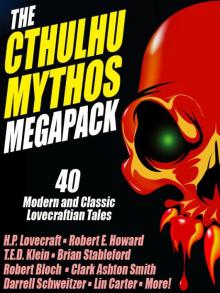 The Cthulhu Mythos Megapack
The Cthulhu Mythos Megapack The Complete H. P. Lovecraft Reader (2nd Edition)
The Complete H. P. Lovecraft Reader (2nd Edition) The Complete Fiction
The Complete Fiction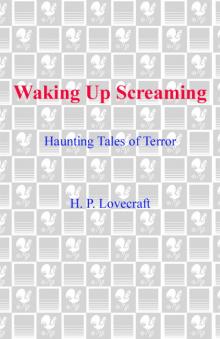 Waking Up Screaming
Waking Up Screaming Transition of H. P. Lovecraft
Transition of H. P. Lovecraft![[1935] The Shadow Out of Time Read online](http://i1.bookreadfree.com/i2/04/12/1935_the_shadow_out_of_time_preview.jpg) [1935] The Shadow Out of Time
[1935] The Shadow Out of Time The Horror Megapack
The Horror Megapack